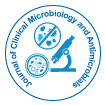

Perspective - (2023)Volume 7, Issue 2
Clinical microbiology is a branch of medical science that focuses on the study of microorganisms and their impact on human health. It plays a crucial role in the diagnosis, treatment, and prevention of infectious diseases. By analyzing various specimens, such as blood, urine, sputum, and tissues, clinical microbiologists can identify pathogens, determine their antimicrobial susceptibility, and provide valuable information for patient management.
Microorganisms, including bacteria, viruses, fungi, and parasites, are an integral part of the natural environment and can exist as commensals or pathogens. Clinical microbiology investigates the pathogenic microorganisms responsible for causing infections in humans. Understanding the characteristics and behavior of these microorganisms is essential for effective patient care. The diagnostic techniques employed in clinical microbiology are diverse and continually evolving. One of the fundamental methods is microbiological culture, which involves the cultivation of microorganisms in a laboratory setting. This process allows for the isolation and identification of specific pathogens. Various types of media, such as blood agar, MacConkey agar, and Sabouraud agar, are used to support the growth of different microorganisms.
Once the microorganism is isolated, further testing is conducted to determine its characteristics and antibiotic susceptibility. Molecular diagnostic techniques, such as Polymerase Chain Reaction (PCR), can detect the presence of specific DNA or RNA sequences, enabling rapid identification of pathogens. Serological tests, which detect antibodies produced by the immune system in response to an infection, are also used for diagnosis and monitoring.
Antibiotic resistance is a growing concern in clinical microbiology. Overuse and misuse of antibiotics have led to the emergence of multidrug-resistant strains of bacteria, making infections difficult to treat. Antimicrobial susceptibility testing is crucial in guiding appropriate antibiotic therapy. By exposing the isolated microorganism to different antibiotics and measuring its growth response, clinical microbiologists can determine the most effective treatment options.
Bacteriology, virology, mycology, and parasitology are the main sub-disciplines within clinical microbiology, each focusing on a specific group of microorganisms. Bacteriology deals with bacterial infections, including those caused by Gram-positive and Gram-negative bacteria. Virology focuses on viral infections and the detection of specific viral agents. Mycology investigates fungal infections, while parasitology deals with infections caused by parasites, such as protozoa and helminths.
Clinical microbiologists are also essential to the advancement of public health. They monitor and investigate infectious disease outbreaks, providing valuable information for disease prevention and control strategies. By identifying the source and transmission routes of infections, they can implement appropriate measures to limit the spread of diseases. Epidemiological studies are conducted to understand the patterns and dynamics of infections within populations, contributing to the development of effective public health policies.
In healthcare settings, hospital microbiology plays a significant role in infection prevention and control. Clinical microbiologists collaborate with infection control teams to develop strategies for preventing Healthcare-Associated Infections (HAIs). They assess the efficacy of sterilization and disinfection processes, monitor the prevalence of multidrug-resistant organisms, and implement protocols to ensure patient and staff safety.
Quality control is an essential aspect of clinical microbiology. Accurate and reliable laboratory results are vital for patient care decisions. Laboratories implement stringent quality control measures to ensure the accuracy and precision of testing procedures. This includes regular calibration of equipment, monitoring of reagents, and participation in external proficiency testing programs.
Biosafety and biosecurity are critical considerations in clinical microbiology laboratories. Handling infectious materials requires strict adherence to safety protocols to prevent laboratory- acquired infections. Proper containment measures, including the use of personal protective equipment, biosafety cabinets, and waste management systems, are implemented to protect laboratory personnel and the surrounding environment. As new infectious diseases emerge and existing pathogens evolve, clinical microbiology continually adapts to meet the challenges. Rapid and accurate diagnosis is essential for effective treatment and containment of outbreaks. Molecular typing techniques, such as Pulsed-Field Gel Electrophoresis (PFGE) and whole-genome sequencing, enable the characterization and tracking of strains, aiding in the identification of sources and transmission routes.
Citation: Fotyei G (2023) Clinical Microbiology and Its Impact on Human Health. J Clin Microbiol Antimicrob. 7:156.
Received: 06-Jun-2023, Manuscript No. JCMA-23-25522; Editor assigned: 09-Jun-2023, Pre QC No. JCMA-23-25522 (PQ); Reviewed: 26-Jun-2023, QC No. JCMA-23-25522; Revised: 04-Jul-2023, Manuscript No. JCMA-23-25522 (R); Published: 11-Jul-2023 , DOI: 10.35248/JCMA.23.7.156
Copyright: © 2023 Fotyei G. This is an open-access article distributed under the terms of the Creative Commons Attribution License, which permits unrestricted use, distribution, and reproduction in any medium, provided the original author and source are credited.